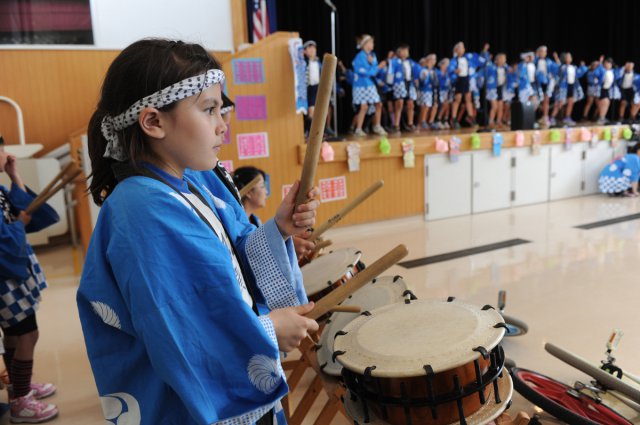When they’re first learning, students need steady practice with kuchishoka to build fluency. The more fun that practice is, the more likely they are to fully engage with it, which results in better understanding, which makes the practice more fun, making them more likely to engage fully, which results in better understanding, which makes it more fun, making them more likely to engage...you get the idea.
My wonderful life and business partner Kristin helped me create this set of kuchishoka cards, and below are 2 games that use the cards. The cards incorporate western notation and Japanese lettering, allowing for easy and natural connections to general music classes and lessons on Japanese language and culture. There are lots of ways to use these in support of your state and national standards while also building skills for taiko.
Students love these games! They’re good for kids ages 7 and up - even adults get into them. Download and print the deck and try these out. The composition extension is a fun challenge for more advanced students. Good luck, and let me know how it goes!
Kuchishoka Karuta
I first encountered Karuta in my Japanese language classes, where teachers used it as a way of practicing hiragana and katakana. For Kuchishoka Karuta, the teacher breaks students into groups of 2-3 and gives each group one set of kuchishoka cards. Students sit on the floor and spread the full deck of cards face up on the floor in between them. The teacher plays a single note and students look for the card with that note. When they find it, they slap it. Whoever slaps it first gets to keep it.
For example, if you play don, students search for a don card. When they find one, they slap their hand down on it. The deck has multiples of each card, so it’s possible for everyone playing to wind up with a card. You can make it harder by removing duplicates, or make the game last longer by giving each group two sets of cards.
Continue until all cards have been picked up.
Composition Extension: Guide students in creating a short pattern using the cards they won during the game. Have students rotate to other groups and try playing the patterns other students created. If time allows, have the class work together to put all patterns together into a song.
Kuchishoka Go Fish
Just like regular Go Fish, the goal is to make a book (a complete set) of a type of note (i.e., all of the don, all of the doko, etc.)
Divide students into pairs and give each pair a deck of kuchishoka cards. Students deal out 2 hands of 7 cards each, with the remaining cards going face down in a pile in the middle. Students play Rock, Paper, Scissors to see who goes first.
The first student plays a note on their drum of a card they’re seeking. They must have at least one of that type of card in their hand to ask for it. For example, if Michelle has two don and wants to know if her partner Mia has any, she plays a don on her drum. If Mia has any don cards, she gives those cards to Michelle. If Mia doesn’t have any don, she says “Go fish!” and Michelle draws the top card from the pile. If she draws a “don,” she gets to go again. If she doesn’t, it becomes Mia’s turn to ask.
Once a student has collected all of the cards of one type, they put those cards together in a small pile face up in front of them.
The game continues until all cards have been collected into books.
You can play the game in groups of 3 as well; in that case, only deal out 4 cards to each student.
Links
Kuchishoka Cards (PDF)
Want to discuss how to incorporate these in your classroom or integrate lessons with your state/national standards? I can help! Email me to set up a video or in-person session.
Interested in ordering the fancy version of Kuchishoka Cards (seen in the picture with this post) for yourself or your classroom? They’re available at our South Bay Beat Institute Store.


















